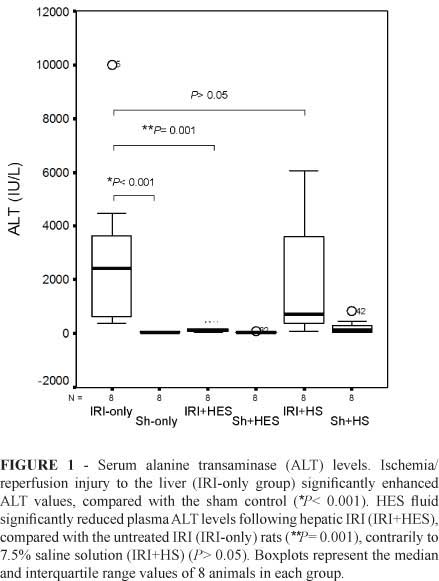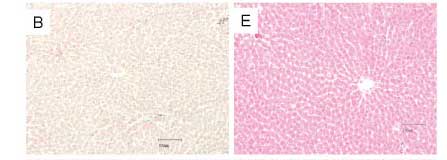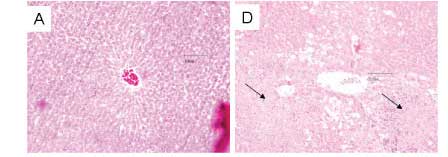PURPOSE: To investigate whether a third generation colloid, hydroxyethyl starch (HES 130/0.4), used for perioperative fluid therapy, protects the rat liver against the late-phase response of ischemia/reperfusion injury (IRI) and if inhibition of neutrophil hepatic infiltration plays a part in this mechanism. METHODS: Wistar rats were used (8 in each group). Three groups had IRI induced by lobar vascular occlusion (60 minutes) and reperfusion (24 hours) and received HES (13 mL/kg iv), 7.5% saline (HS) (13 mL/kg iv) or no fluid. Three other groups were sham-operated and received the same fluid as the test groups. After 24 hours of reperfusion, blood was drawn for alanine aminotransferase (ALT) quantification and ischemic liver samples were taken for histological study (hematoxylin and eosin and chloroacetate staining of neutrophils). RESULTS: HES treatment attenuated the elevation in serum ALT (P=0.001) and reduced the extent of hepatocellular necrosis (P<0.01) compared with the IRI controls. HES-mediated cytoprotection was associated with a decrease of infiltration of neutrophils in the necrotic areas (P<0.05) compared with the untreated IRI rats, but not with the volume control IRI rats (P>0.05). CONCLUSION: Hydroxyethyl starch suppresses inflammatory response and ameliorates the late-phase response of hepatic ischemia/reperfusion injury.
Hetastarch; Ischemia; Reperfusion; Rats






